Excited for your Chiang Mai trip? Getting around a new city is often as important as the attractions themselves, and in Chiang Mai, transport plays a big role in shaping the travel experience. Unlike Bangkok, with its modern BTS Skytrain and MRT systems, or Phuket, where taxis and tourist shuttles dominate, Chiang Mai relies more on local and informal modes of transport. This difference can surprise first-time visitors, but it also adds to the city’s charm and authenticity.
Tourists in Chiang Mai will find a blend of traditional and modern travel options. From iconic red songthaews and tuk-tuks to app-based ride-hailing services like Grab, the city offers choices that range from budget-friendly to highly convenient. For longer journeys, buses, trains, and flights connect Chiang Mai to other parts of Thailand and neighboring countries, making it a well-linked regional hub.
This blog will help you to understand how these transport systems work and when to use each to save time, money, and hassle while enjoying a more authentic Chiang Mai experience.
Transport Infrastructure & City Layout
Old City
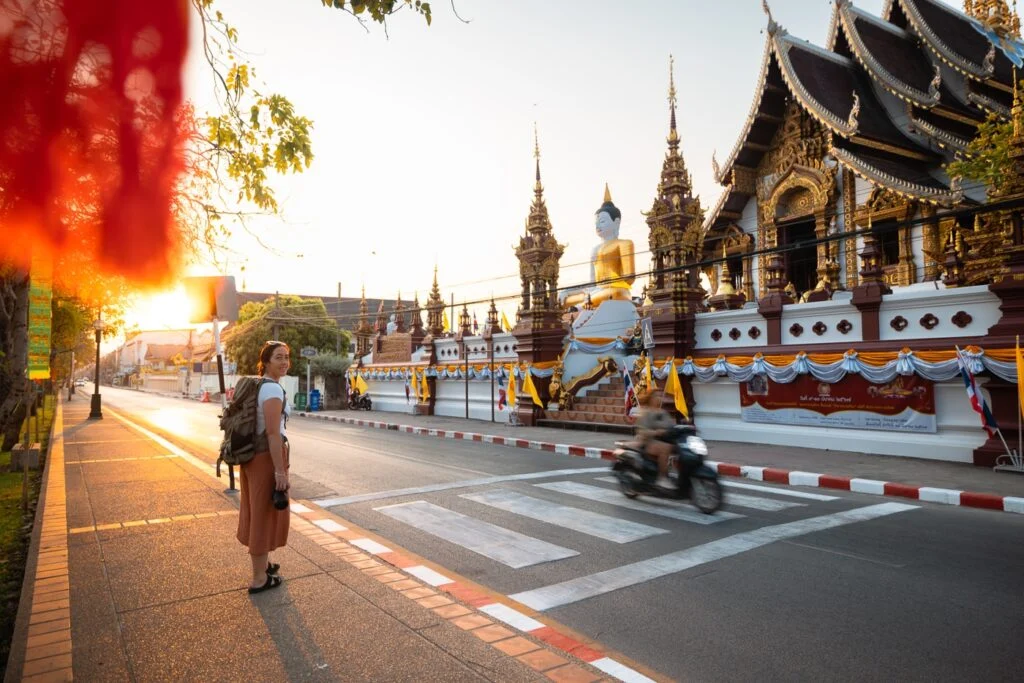
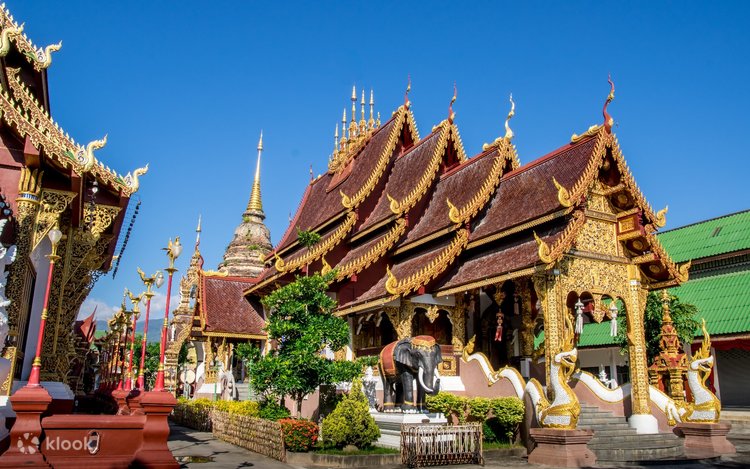
A square-shaped historic core surrounded by a moat and ancient walls. This is the cultural heart, packed with temples, guesthouses, markets, and cafes. Walkable and atmospheric, it’s where many tourists base themselves.
It’s the kind of place that invites you to slow down. Instead of rushing from sight to sight, you wander, you linger, you discover. One moment you’re standing in awe at the towering ruins of Wat Chedi Luang, and the next, you’re laughing with a vendor while trying your first bite of khao soi. The Old City isn’t just Chiang Mai’s historic center; it’s where the city’s heart still beats.
Nimmanhaemin
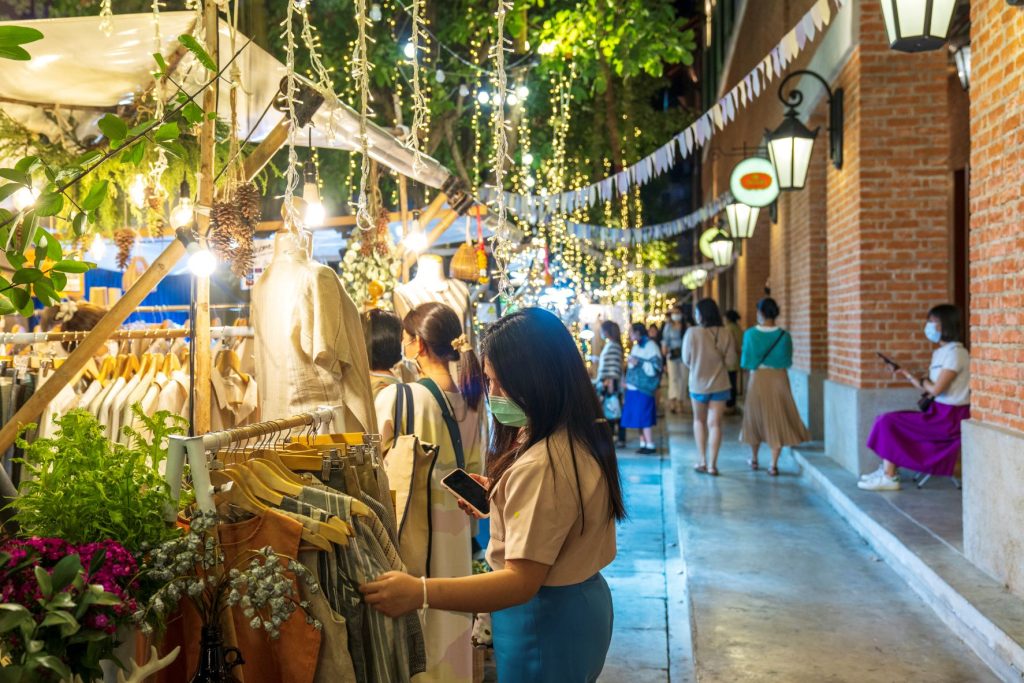
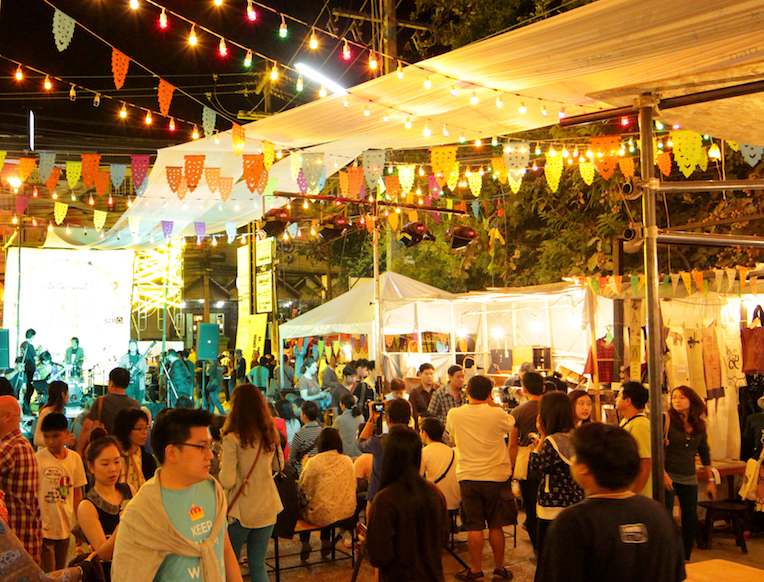
A trendy, modern district west of the Old City. Popular with expats, digital nomads, and younger travelers, it’s known for chic cafes, nightlife, and boutique hotels.
If the Old City is Chiang Mai’s historic soul, then Nimmanhaemin is its trendy heartbeat. Think chic cafes with latte art, rooftop bars, boutique shops, and a creative buzz that attracts expats, students, and digital nomads. By day, it’s all coffee and co-working vibes; by night, it transforms into a hotspot for cocktails, live music, and street food adventures. Nimman is where tradition meets modern lifestyle, with a dash of Instagram flair.
Night Bazaar & Riverside
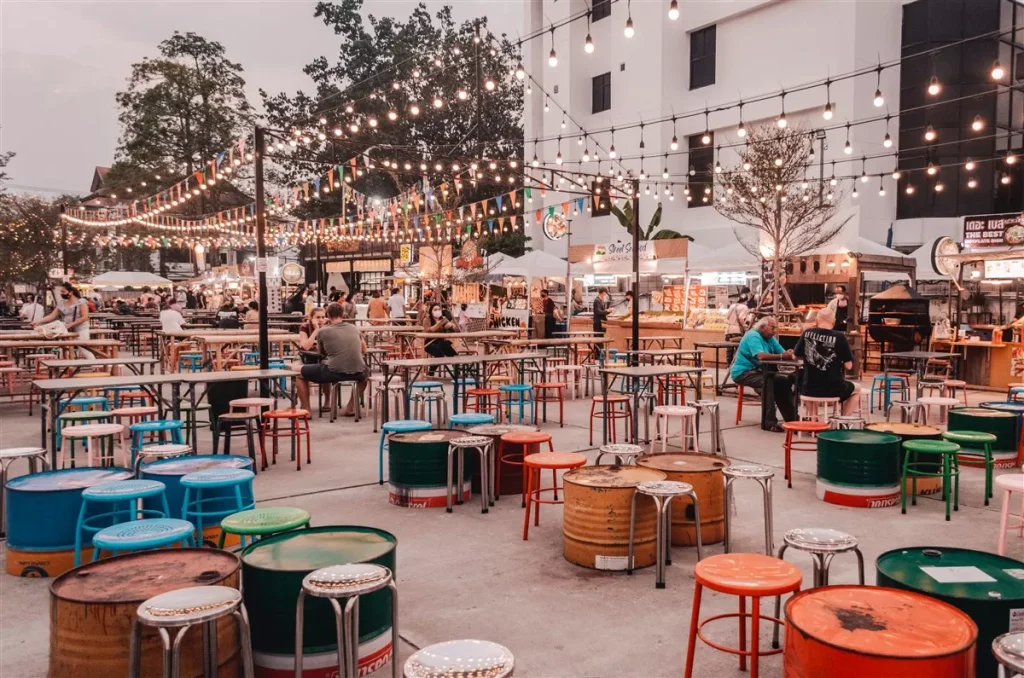
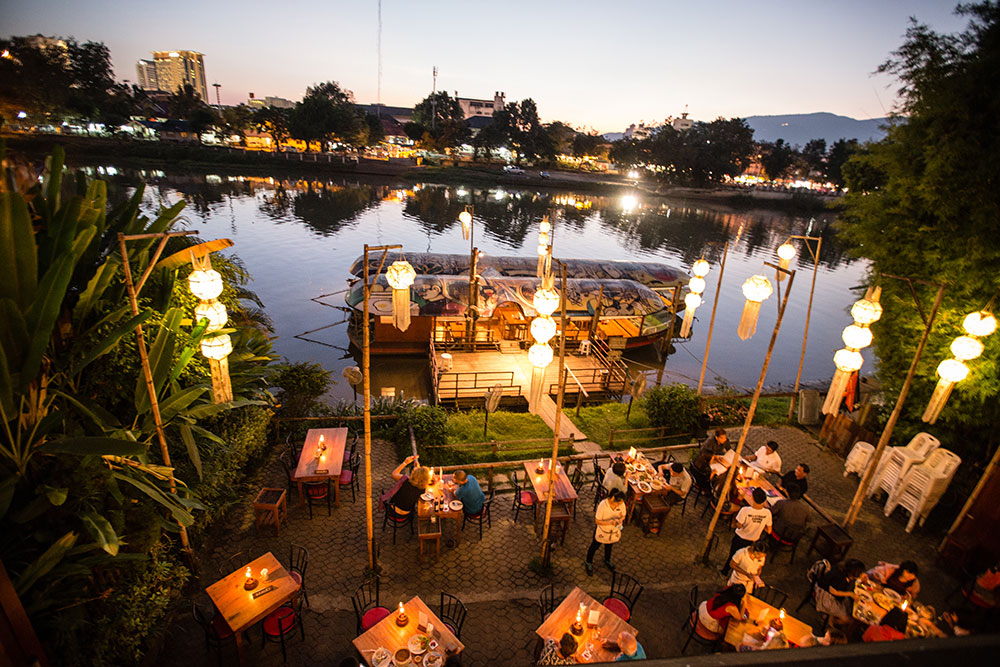
East of the Old City along the Ping River. Best known for evening markets, food stalls, and lively bars. When the sun sets in Chiang Mai, the Night Bazaar and Riverside come alive. Stalls spill over with handmade crafts, colorful textiles, and sizzling street food aromas that make it impossible not to stop for a bite. Along the Ping River, you’ll find lively bars, cozy restaurants, and even a few hidden jazz clubs that keep the energy flowing late into the night. Whether you’re hunting for souvenirs, sampling local eats, or just soaking in the atmosphere, this area is Chiang Mai’s ultimate evening playground.
2. Main Transport Hubs
Arcade Bus Terminal
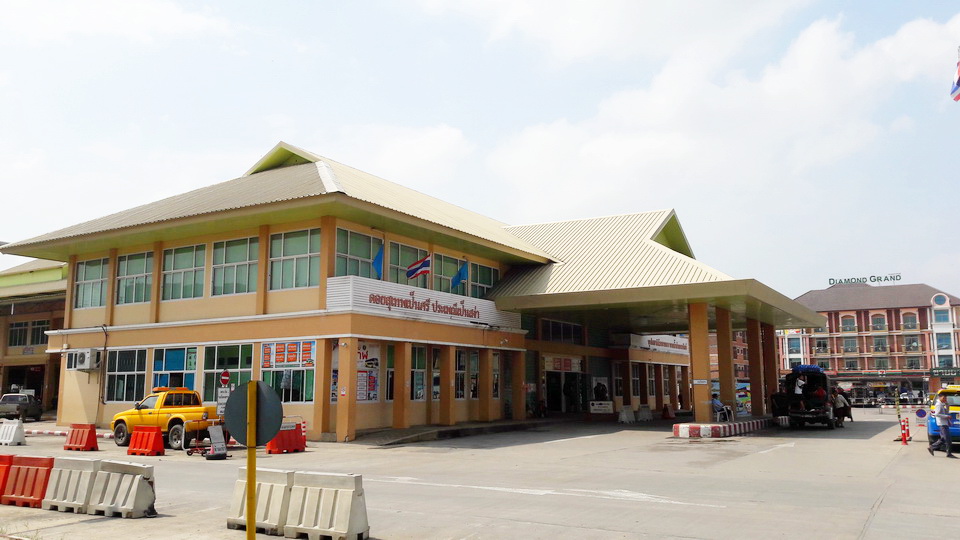

The main intercity hub for buses to Bangkok, Chiang Rai, Pai, Lampang, and other northern provinces. The Arcade Bus Terminal is Chiang Mai’s main gateway for travelers heading in or out of the city. It’s two terminals (Arcade 2 & 3) sitting side by side, serving long-distance routes to Bangkok, Chiang Rai, Pai, and beyond. The vibe here is busy but organized ticket counters lined up, snack shops for last-minute bites, and plenty of waiting space.
If you’re planning an onward journey, this is where you’ll likely catch your bus. Book tickets a day in advance, especially for popular routes, and keep small change handy for snacks and water.
Chang Phueak Bus Terminal

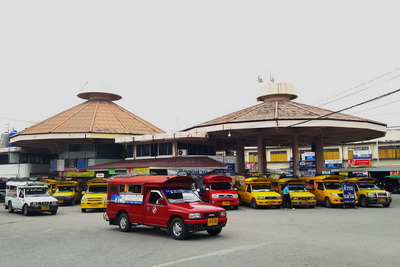
Chang Phueak Bus Terminal is the smaller, more local cousin of the big Arcade station. Located just north of Chiang Mai’s Old City, it mainly serves short-distance routes to nearby towns like Mae Rim, Fang, and Chiang Dao. The atmosphere here feels a lot more relaxed, think local commuters, small buses and minivans, and ticket counters that are easy to navigate. It’s not flashy, but it’s the go-to hub if you’re planning a quick escape into Chiang Mai’s countryside.
Chiang Mai International Airport (CNX)
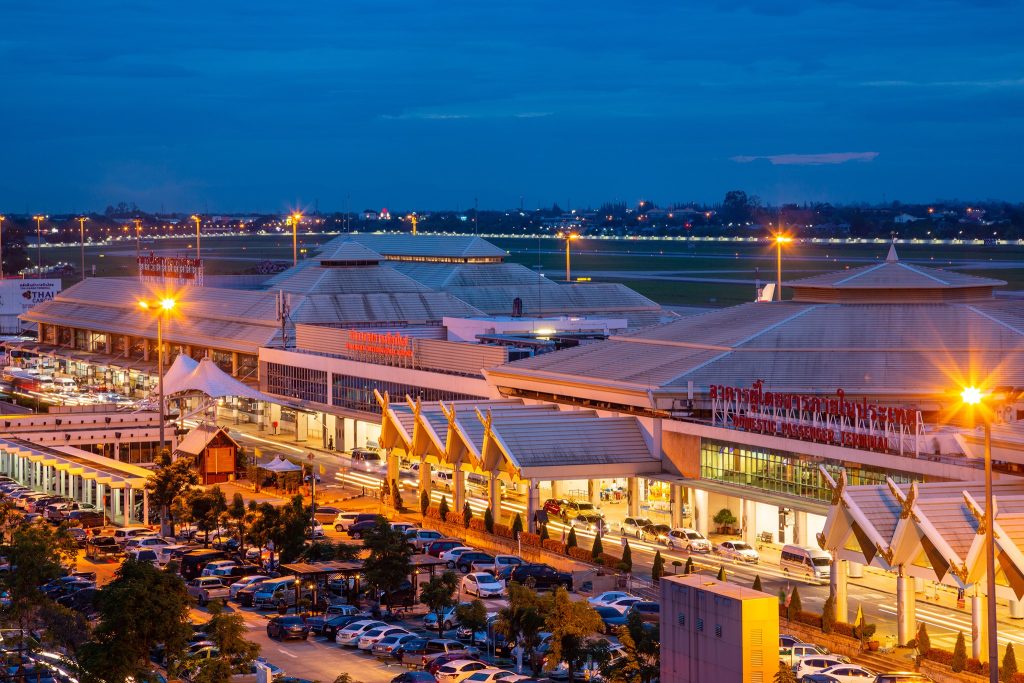
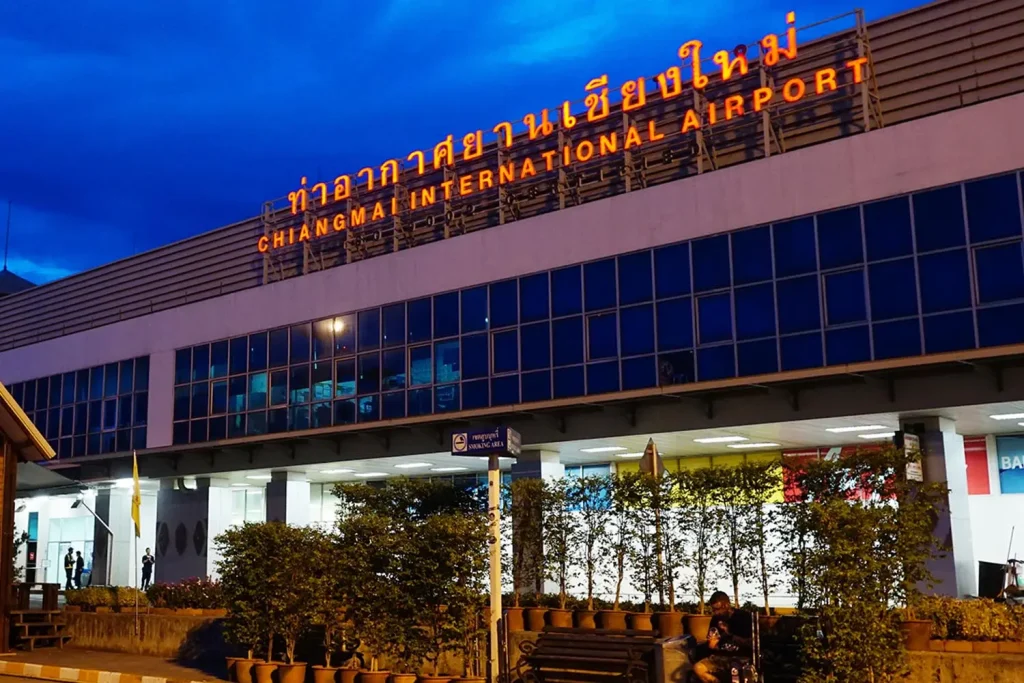
A smaller terminal for short northern routes, including Mae Rim and Chiang Dao. Chiang Mai International Airport is the city’s modern gateway to the world. Just a short 10–15 minute ride from the Old City, it’s small enough to feel stress-free but big enough to connect you to everywhere you need to go, whether it’s a quick hop to Bangkok, a beach escape down south, or even international routes to Vietnam, China, and beyond.
Since it’s so close to the Old City, you can grab a red songthaew or even walk there if you’re nearby. The airport is surprisingly easy to navigate, with friendly staff, plenty of food options, and a calm, laid-back vibe compared to the hustle of Bangkok’s airports. For most travelers, it’s the first hello and last goodbye to Chiang Mai-and it sets the tone perfectly: welcoming, convenient, and just the right size.
Chiang Mai Railway Station
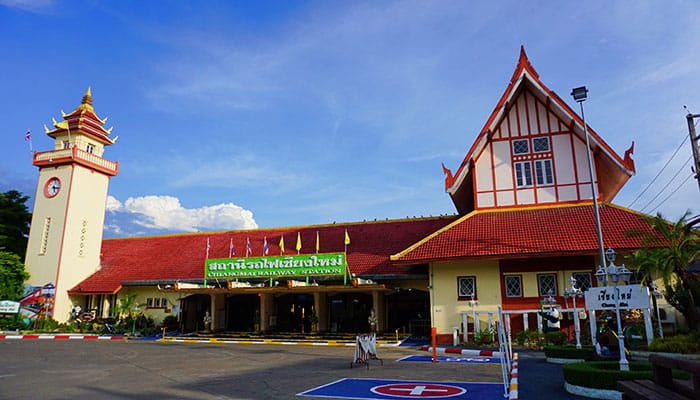
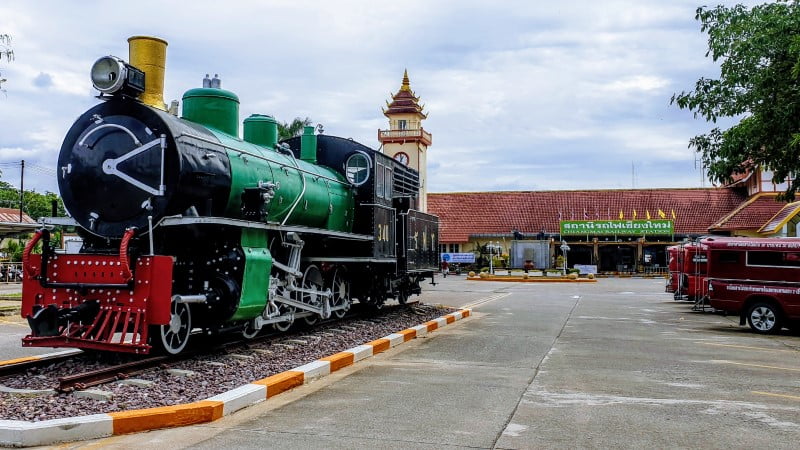
East of the Old City, it offers day and overnight trains to Bangkok and central Thailand. The sleeper train to Bangkok is especially popular among budget travelers. Stepping into Chiang Mai Railway Station feels like stepping back in time, in the best way possible. Located just east of the Old City, this charming station is the gateway for travelers arriving by train from Bangkok and other parts of Thailand.
The overnight sleeper train from Bangkok to Chiang Mai is especially popular with backpackers and budget travelers, offering a scenic and relaxing journey through the countryside. The station itself is simple yet full of character, with its retro vibe, friendly vendors selling snacks, and a slower pace that perfectly matches Chiang Mai’s laid-back lifestyle. It’s not just a travel hub, it’s part of the journey, a gentle transition into the laid-back rhythm of the north.
3. Future Developments
Chiang Mai Light Rail Transit (LRT)
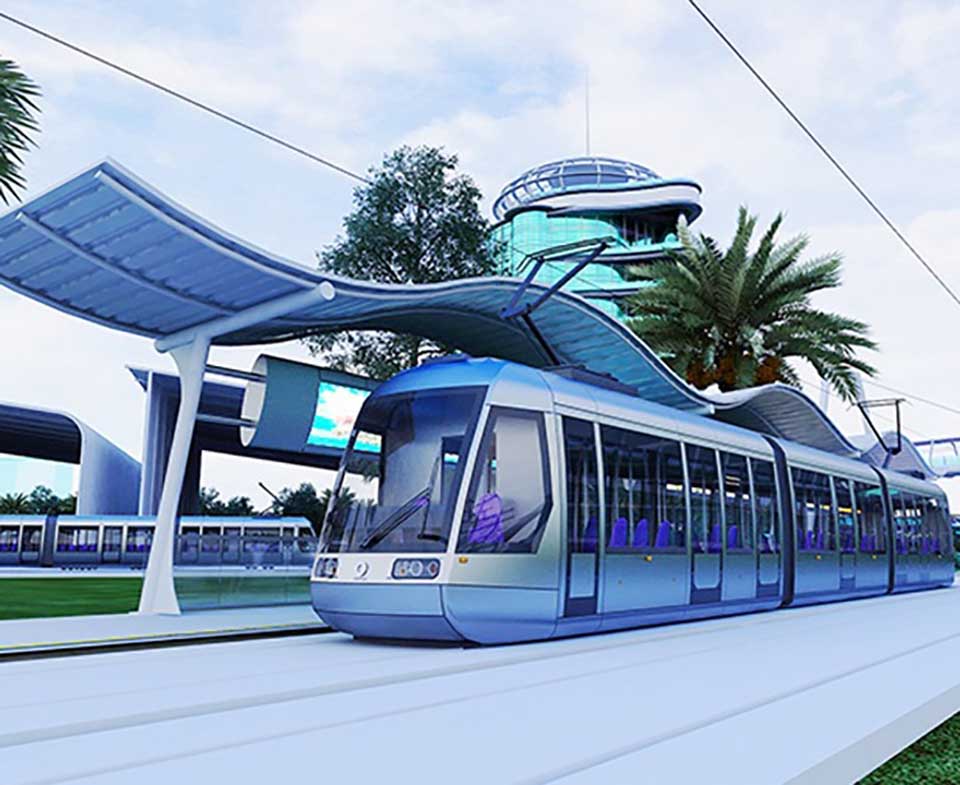
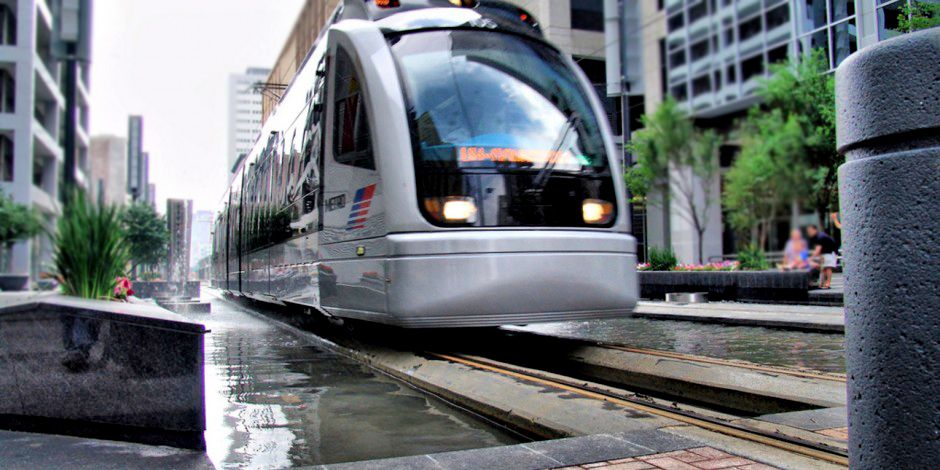
A planned urban rail system designed to reduce congestion. The first line is projected to launch around 2027, linking the airport, Old City, and residential districts. One of the most exciting developments for Chiang Mai’s future is the much-talked-about Light Rail Transit (LRT). Imagine zipping smoothly from the airport to the Old City or out to residential districts-no haggling, no traffic jams, just quick and reliable transport.
The LRT is still in the planning and development stage, with the first line expected to roll out around 2027. Three main routes (Red, Blue, and Green lines) are on the table, designed to connect key parts of the city while easing congestion. For locals, it means a modern upgrade to daily commuting; for travelers, it promises a more seamless way to explore Chiang Mai without depending only on songthaews or ride-hailing apps. It’s not here yet, but something to keep an eye on if you’re planning a trip a few years down the road.
Cycling & Walkability Initiatives
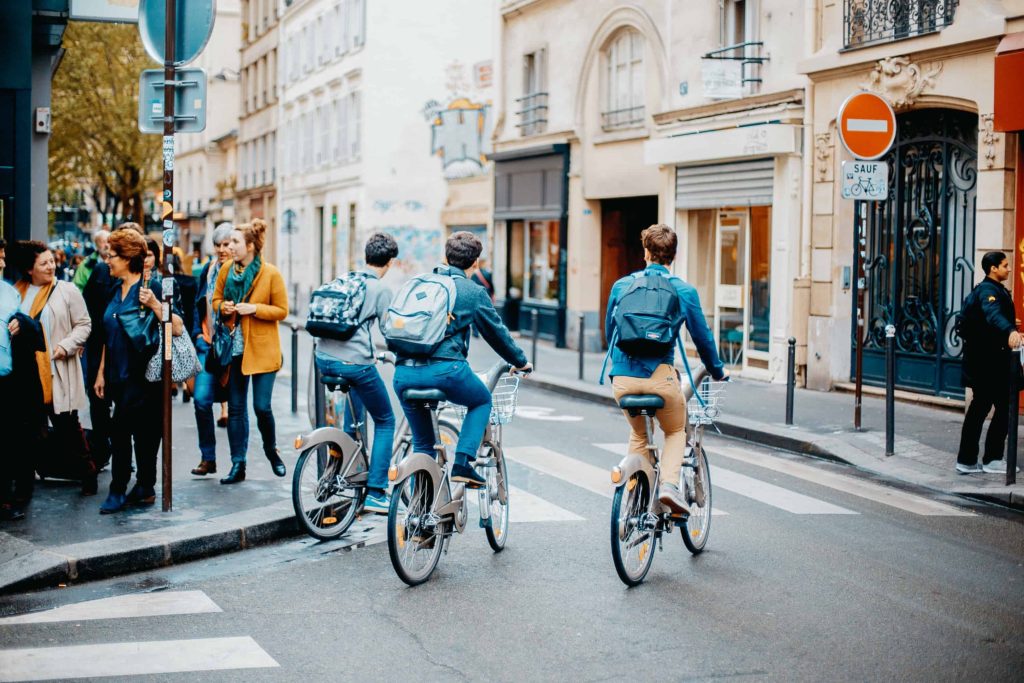
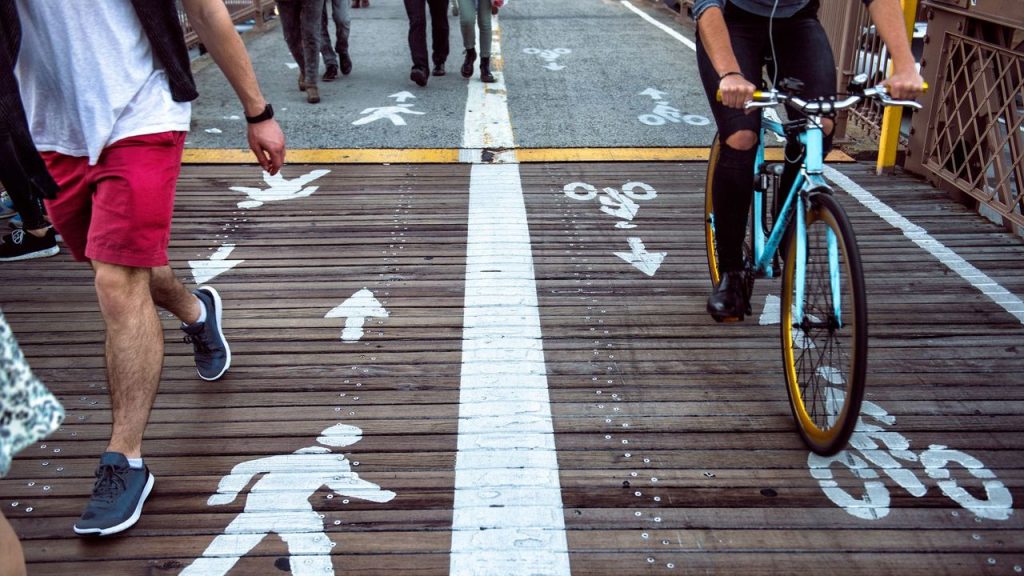
The city has been upgrading sidewalks and introducing more bike lanes, especially around Nimman and Chiang Mai University. Despite these efforts, traffic and the limited availability of dedicated cycling paths remain significant challenges.
If you love exploring a city at your own pace, Chiang Mai is steadily becoming more walk- and cycle-friendly. Around Nimmanhaemin and the university areas, you’ll notice improved sidewalks, bike lanes, and shaded paths that make wandering on foot or two wheels much more pleasant. While it’s not Amsterdam just yet, traffic and limited bike paths can still be tricky city is taking real steps toward greener, healthier ways to get around.
For travelers, cycling is a fun way to discover hidden spots, cafes, and temples off the main tourist trail. And if walking is more your style, the compact layout of the Old City makes it perfect for slow exploration, where every corner reveals history, street food, or a quiet coffee shop. These initiatives are part of Chiang Mai’s push toward sustainable transport, and they’re already making the city more enjoyable for both locals and visitors.
In-City Transport Options
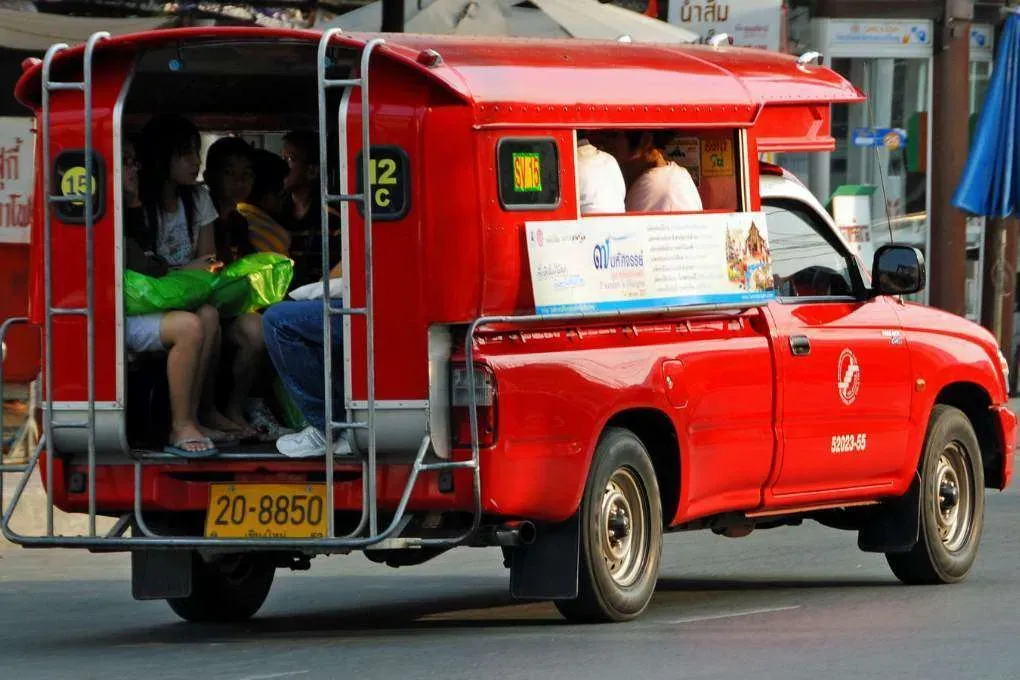
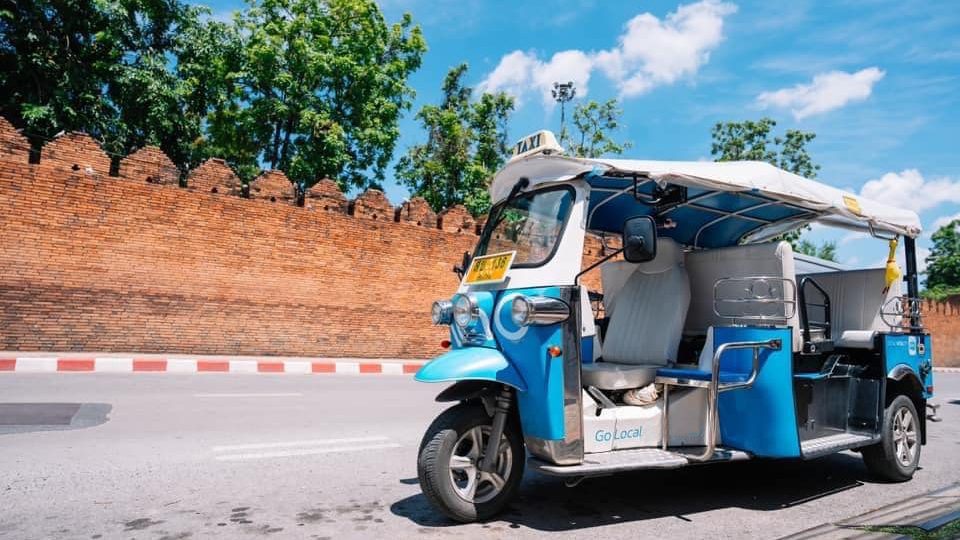
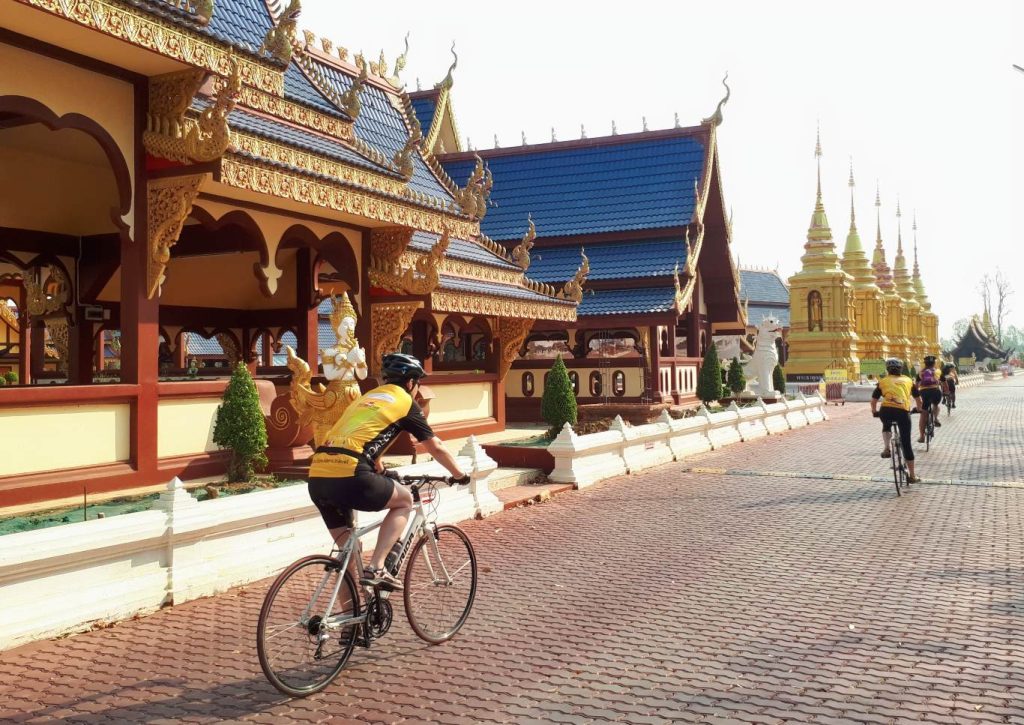
| Mode | Cost (Approx.) | Best For | Pros | Cons |
| RTC City Bus | ฿50 flat fare | Airport ↔ City transfers, budget travel | Air-conditioned, fixed fare, reliable | Limited routes, less frequent than Grab |
| Red Songthaews (Rot Daeng) | ฿20-40 (short ride) | Every day city rides, local experience | Cheap, everywhere in the city, cultural must-try | Price varies, need to negotiate sometimes |
| Colored Songthaews | ฿20-80 (longer routes) | Day trips to suburbs/districts | Cheap regional transport connects villages | Less frequent, fixed departure points |
| Tuk-Tuks | ฿50-100 per ride | Short distances, nightlife trips | Fun, fast, easy to find | Pricey for the distance, must bargain |
| Pedicabs (Samlor) | ฿200-300 per ride | Leisurely Old City rides | Unique, eco-friendly, traditional charm | Slow, tourist-oriented, not practical daily use |
| Ride-Hailing (Grab, Bolt) | ฿60-150 (avg. trip) | Convenience, night rides, direct routes | Upfront fares, safer, no language barrier | Slightly pricier than songthaews |
| Motorbike/Scooter Rental | ฿150-300 per day | Flexible exploring (Doi Suthep, Pai) | Independence, cheap for long trips | Risky, requires a license, and police checkpoints |
| Walking | Free | Old City temples, cafés, markets | Best for sightseeing, no traffic stress | Limited outside the Old City, the hot weather issue |
| Cycling / E-Bike | ฿100-250 per day | River/countryside exploring | Eco-friendly, fun, easy to rent | Traffic-heavy, patchy bike lanes |
Getting Around Chiang Mai’s Key Zones
| From / To | Best Transport | Approx. Fare | Travel Time | Tourist Tip |
| Old City → Airport | RTC City Bus / Grab | ฿50 (bus) / ฿100-150 (Grab) | 15 mins | Bus = cheapest, Grab = fastest |
| Old City → Nimman | Songthaew / Grab | ฿20-30 / ฿60-80 | 10 mins | Songthaew = local experience |
| Old City → Night Bazaar | Tuk-tuk / Songthaew | ฿20-30 / ฿60-80 | 10 mins | Tuk-tuks are great for evenings |
| Nimman → Airport | Grab / City Bus | ฿100 / ฿50 | 15 mins | Easy direct route |
| Nimman → Bus Terminal (Arcade) | Grab | ฿120-150 | 20-25 mins | No direct bus option |
| Night Bazaar → Old City | Tuk-tuk / Songthaew | ฿20-30 / ฿60-80 | 10 mins | Walkable to nearby spots |
| Airport → Bus Terminal | Grab | ฿150-200 | 20-25 mins | Best to pre-book during rush hours |
| Railway Station → Old City | Songthaew / Grab | ฿30-40 / ฿100 | 15 mins | Songthaews line up outside the station |
Intercity & Regional Travel at a Glance
| Mode | Destinations | Time | Cost (Approx.) | Comfort Level | Best For |
| Bus / Minivan | Chiang Rai (3-4 hrs), Pai (3-4 hrs), Lampang, Bangkok (10-12 hrs) | 3-12 hrs | ฿150-900 | Moderate | Budget travelers, short regional trips |
| Train | Bangkok ↔ Chiang Mai | 12-14 hrs (overnight) | ฿400-1,500 | Varies by class: basic seats → comfy sleeper berths | Scenic travel, backpackers, slow pace |
| Flight | Bangkok, Phuket, Krabi, Chiang Rai + Intl. (SG, KL, Hanoi, HK, Taipei) | 1-2 hrs domestic, 2-5 hrs intl. | ฿800-4,000+ (budget airlines often cheaper) | High comfort, fastest option | Time-saving, onward international travel |
| Songthaew / Minivan (Day Trips) | Doi Suthep, Mae Taeng, San Kamphaeng, Doi Inthanon | 30 mins-2 hrs | ฿40-600 (shared vs. private) | Simple but less comfortable | Day excursions, flexible local exploring |
3-Day Chiang Mai Transport Itinerary
Day 1- Explore the Old City & Night Bazaar
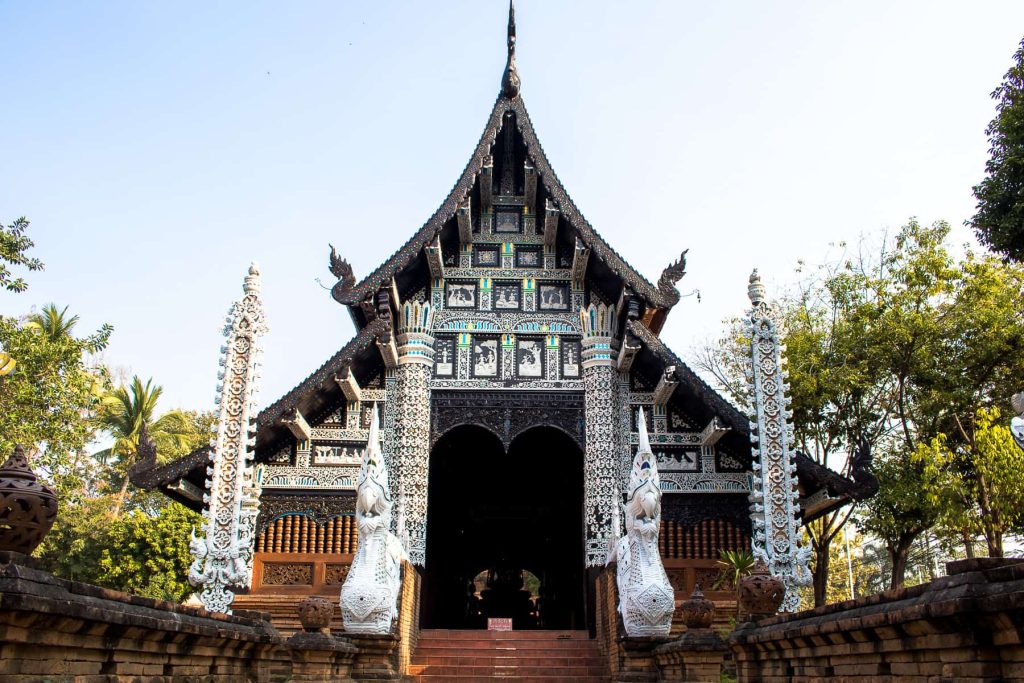
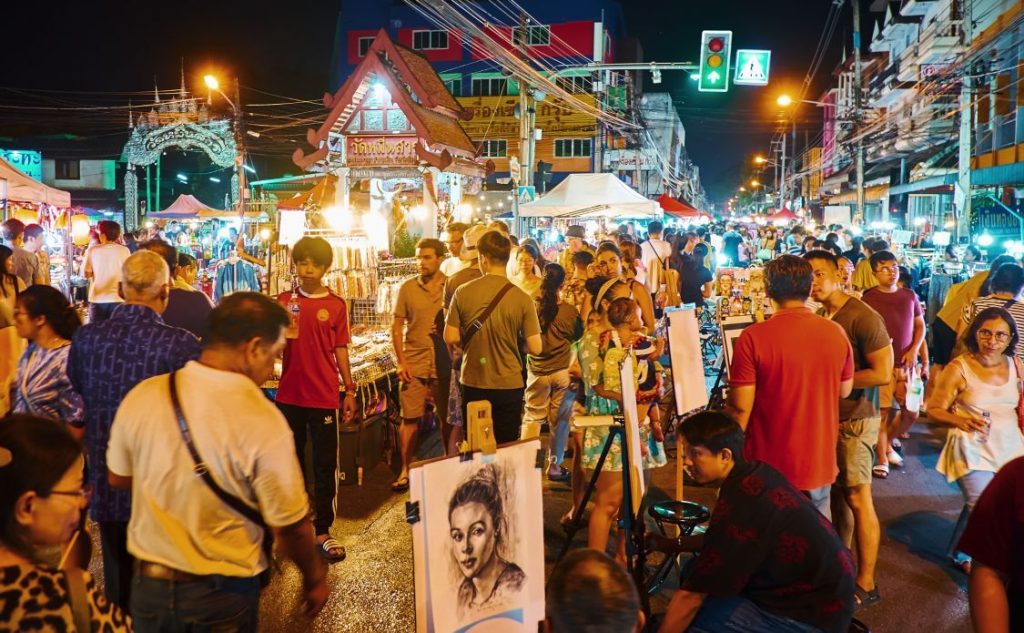
Start your Chiang Mai adventure in the Old City, where history and charm meet at every corner. Spend the morning wandering or cycling past ancient temples like Wat Chedi Luang and Wat Phra Singh, or, for something extra special, hop on a pedicab (฿200-300) and let the slow ride soak you into the city’s cultural rhythm.
By afternoon, switch gears and head over to Nimmanhaemin, the trendy side of town known for its artsy murals, cozy cafes, and youthful energy. Just grab a red songthaew (฿20-30) from the Old City and you’re there in minutes.
When the sun goes down, jump into the lively buzz of the Night Bazaar with a tuk-tuk ride (฿60-80) and treat yourself to street food, souvenirs, and the colorful night market vibe. End the day with a comfy Grab ride (฿100) back to your hotel, reflecting on a perfect mix of history, art, and modern Chiang Mai nightlife.
Day 2- Day Trip Adventure
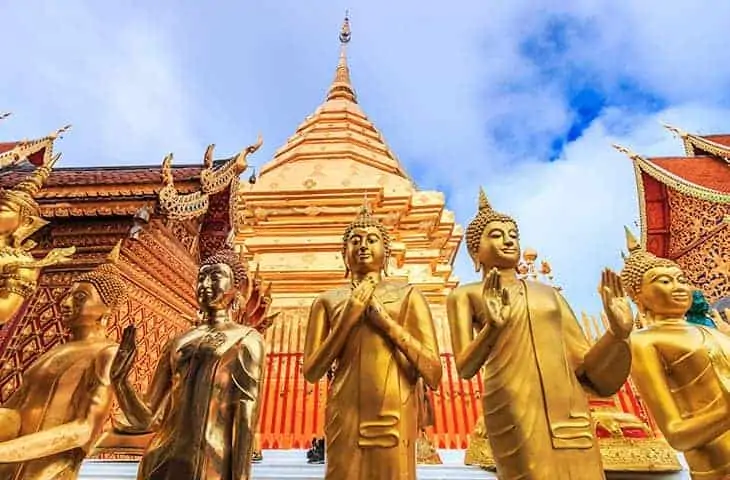

Wake up early and fuel up with a hearty breakfast because today is about mixing nature with culture. Head out on a half-day trip to Doi Suthep Temple, perched high on the mountain and offering sweeping views of Chiang Mai below. You can take a songthaew from the Old City (฿60-80) or hire a private car/Grab if you prefer comfort. The climb up the Naga staircase is worth it for the golden temple and stunning panoramas.
By afternoon, unwind back in the city with a visit to a local massage spa or explore the artsy lanes around the Old City, think hidden cafes, handicraft shops, and quiet courtyards.
As the evening rolls in, make your way to the Riverside area or the Night Bazaar district for a more laid-back vibe. Grab a riverside dinner with live music or sample street food bites while soaking up the evening lights dancing on the Ping River. A tuk-tuk ride back (฿80-100) keeps the fun going while adding a little local flair to your night.
Day 3- Regional Travel
1. Chiang Rai Day Trip

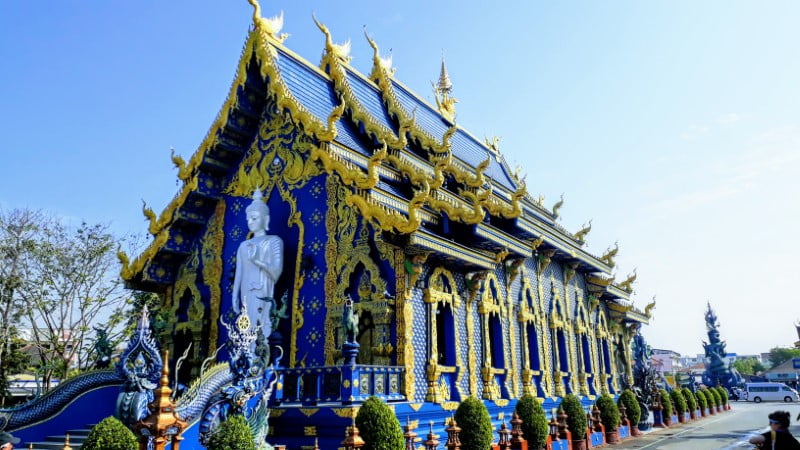
A trip to Chiang Rai is such a rewarding escape. The journey takes about 3-4 hours by bus from the Arcade Bus Terminal (around ฿200), but many travelers prefer the comfort of a guided minivan tour (฿800-1,000) that takes care of all the details.
Once you arrive, you’ll find yourself in a completely different vibe. Chiang Rai feels quieter and more artistic, almost like a hidden creative corner of Northern Thailand. The highlight is the dazzling White Temple (Wat Rong Khun), a surreal masterpiece that looks like it’s carved from snow and mirrors. Just as breathtaking is the Blue Temple (Wat Rong Suea Ten), with its glowing sapphire walls and golden details that feel straight out of a dream.
If you’re into something a little edgier, the Black House (Baan Dam Museum) mixes art, mystery, and traditional Lanna architecture in ways that will surprise you. Between temple-hopping, you can recharge with a bowl of Chiang Rai’s famous khao soi noodles or stop for a coffee. This region has a blossoming cafe culture thanks to its highland beans.
By evening, buses and tours usually get you back to Chiang Mai in time for dinner, tired but glowing from a day of discovery. And if you want a bit more freedom? Hiring a private driver for the day lets you travel at your own pace and even stretch your adventure to the Golden Triangle, where Thailand meets Laos and Myanmar.
2. Heading South to Bangkok
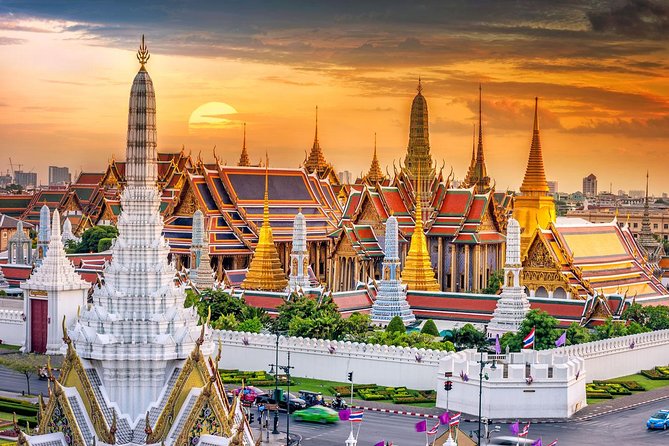
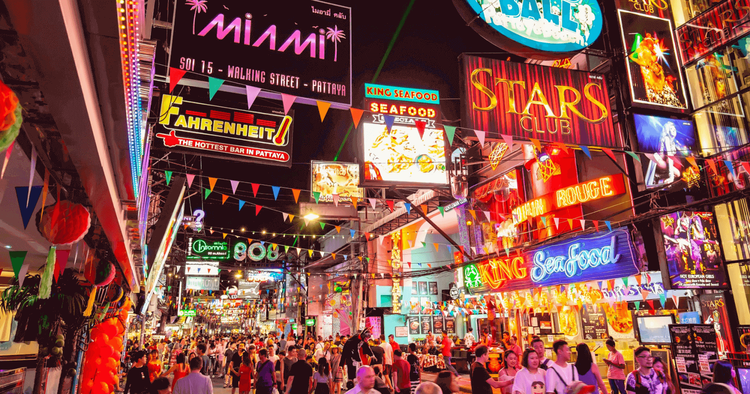
Bangkok will be a good option to wind down your Chiang Mai trip. The overnight sleeper train is hands-down one of the most charming ways to travel. Departing from Chiang Mai Railway Station, the ride takes about 12-14 hours, with tickets ranging from ฿800-1,200 depending on whether you choose a fan coach, air-con, or the cozy sleeper cabins.
Think of it less as a commute and more as part of your journey, the train rocks gently through northern mountains, past rice fields and tiny villages, giving you a moving window into Thailand’s landscapes. By night, the seats fold into surprisingly comfortable beds, and there’s something magical about dozing off to the rhythm of the tracks and waking up as the sun rises over central Thailand.
It’s a slower option than flying, but way more atmospheric, and you arrive in Bangkok rested and ready to dive straight into the buzz of the capital. For travelers who like to mix comfort with adventure, this route is a must-try.
3. Flying Out
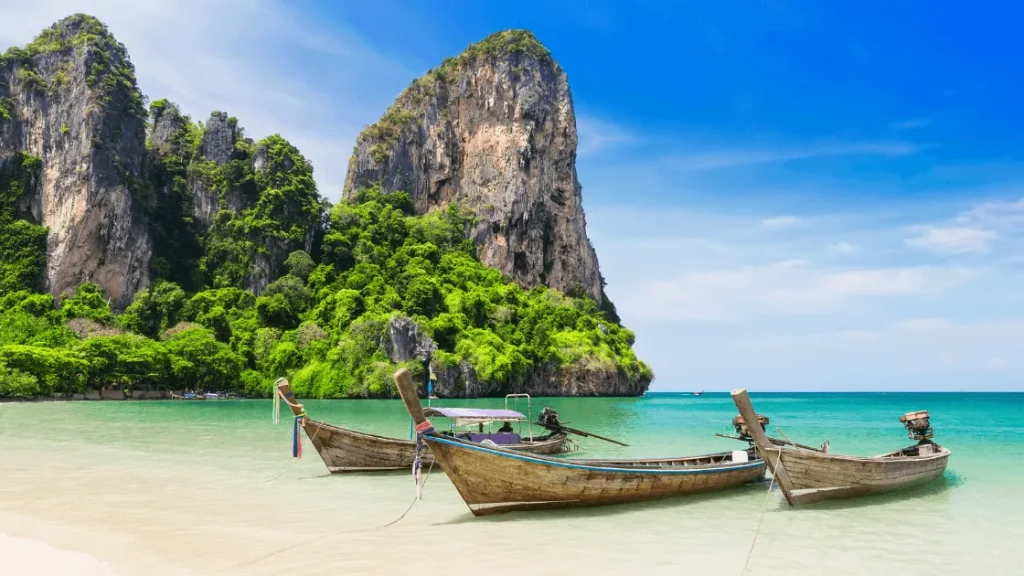

If you’re short on time or just prefer convenience, flying out of Chiang Mai International Airport (CNX) is the quickest and easiest way to move on to your next adventure. A Grab ride to the airport usually costs around ฿120 and takes less than 20 minutes from the Old City, making it super stress-free. From there, you’ll find plenty of domestic flights, just an hour to Bangkok or Phuket, perfect if you want to maximize your holiday time.
Chiang Mai also connects internationally to nearby hubs like Singapore, Kuala Lumpur, Hanoi, and Taipei, so you can seamlessly continue your travels across Asia. While it doesn’t have the romance of the overnight train, hopping on a flight means more time exploring your next destination and less time in transit. It’s the go-to choice for travelers with tight schedules or those who simply love the ease of flying.
Transport Balance in This Itinerary
- Day 1: Walking, pedicab, songthaew, tuk-tuk, Grab
- Day 2: Songthaew, Grab, minivan for day trips
- Day 3: Bus / Train / Flight, depending on onward journey
Getting to Major Tourist Attractions

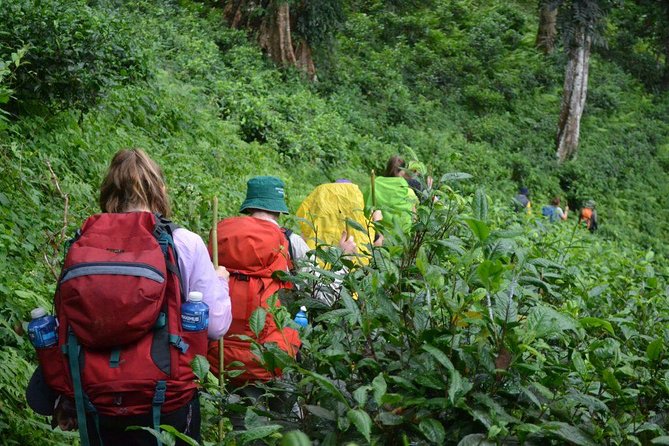
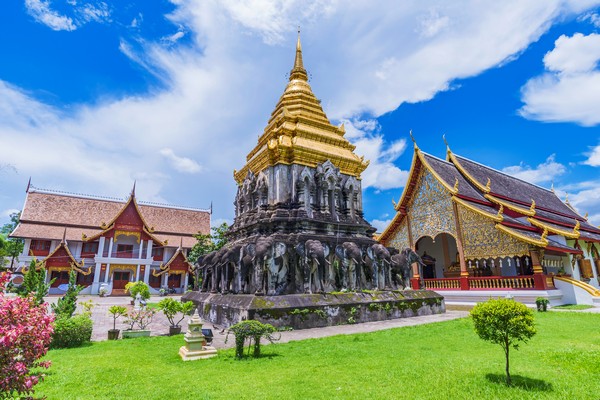
| Attraction | Best Transport | Approx. Cost | Travel Time | Tourist Tip |
| Old City Temples (Wat Phra Singh, Chedi Luang, Chiang Man) | Walking / Cycling / Red Songthaew | Free / ฿50 (bike rental) / ฿20-30 | 5-15 mins | Stay inside Old City for max walkability |
| Doi Suthep Temple | Shared Red Songthaew / Grab / Scooter Rental | ฿40-60 (shared) / ฿250-300 (Grab round trip) / ฿150-300 (scooter per day) | 30-40 mins uphill | Cheapest from the Chiang Mai Zoo songthaew stand |
| Night Bazaar | Tuk-tuk / Grab / RTC City Bus | ฿50-80 / ฿100 / ฿50 | 10-15 mins | Best visited at night; walk between stalls |
| Sunday Walking Street (Rachadamnoen Road) | Walking (if staying in Old City) / Tuk-tuk / Grab | Free / ฿50-80 / ฿100 | 5-10 mins | Roads closed to traffic-arrive early to avoid crowds |
| Nimmanhaemin (cafes, boutiques, nightlife) | RTC City Bus / Grab / Scooter | ฿50 / ฿60-100 / ฿150-300 per day | 10 mins | Best explored on foot once you arrive |
| Elephant Sanctuaries (Mae Taeng, Chiang Dao) | Pre-arranged Tour Shuttle | Usually included in the tour price | 1-2 hrs | Always book with ethical sanctuaries & tours |
| Adventure Tours (rafting, zipline, trekking) | Minivan transfer (via tour operator) | Included in package | 1-2 hrs | Operators provide door-to-door pickups |
Chiang Mai offers many more activities, and to delve into those, getting to know more about each activity will be a plus point. To learn more about the other activities, attractions, and authenticity of Chiang Mai, visit Things to do in Chiang Mai.
Cost & Budgeting for Transport in Chiang Mai
| Mode | Typical Fare | Notes |
| Red Songthaews (Rot Daeng) | ฿20-40 (within city) / ฿50-80 (suburbs) | Shared rides are the cheapest and most local way to travel. Negotiate for private hires. |
| Colored Songthaews (Regional) | ฿20-80 | Fixed routes to nearby districts (Mae Rim, San Pa Tong, Doi Saket). |
| Tuk-Tuks | ฿50-150 (short city trips) | Always negotiate; fun but pricier than songthaews. |
| Grab / Ride-Hailing Apps | ฿100-200 (short–medium trips) | Convenient, safe at night, and English-friendly. Prices surge at peak hours. |
| RTC Chiang Mai City Bus | Flat ฿50 per ride | Covers airport ↔ Old City ↔ Nimmanhaemin ↔ Bus Terminal. Cash or Rabbit card. |
| Motorbike / Scooter Rental | ฿150-300 per day + fuel | Most flexible option. Requires an international license & helmet. |
| Pedicabs (Samlor) | ฿200-300 per leisure ride | Mostly for sightseeing in the Old City. |
| Taxi (Airport → City) | ฿150-180 fixed rate | Available at official airport taxi counters. More regulated than tuk-tuks. |
Do’s & Don’ts of Transport in Chiang Mai
Do’s
- Confirm fares before boarding tuk-tuks or songthaews.
- Wear a helmet when riding a scooter or motorbike.
- Use Grab (or Bolt/InDriver) for safe and clear pricing.
- Carry small change (฿20/฿50 bills) for songthaew rides.
- Be polite when sharing rides with locals.
- Learn a few Thai phrases makes bargaining easier and friendlier.
Don’ts
- Don’t board unlicensed taxis or accept random cheap ride offers.
- Don’t assume all drivers understand English; show your destination on Google Maps.
- Don’t forget to negotiate tuk-tuk fares before the ride.
- Don’t leave valuables on motorbike baskets or visible in cars.
- Don’t expect BTS/MRT systems like in Bangkok-transport here is more local and informal.
Accessibility & Traveler Profiles
| Traveler Type | Best Options | Avoid |
| Families with Children | Grab, airport taxis, private vans | Songthaews, scooters (not child-friendly) |
| Solo Backpackers | Red songthaews, scooters, bicycles, and occasional buses | Taxis/Grab only (too costly long-term) |
| Elderly/Disabled | Grab, private cars, airport taxis | Tuk-tuks, songthaews (hard to climb into) |
| Digital Nomads | Scooters, ride-hailing apps, RTC city bus, cycling in Old City/Nimmanhaemin | Songthaews for long distances |
Eco-Friendly & Future Transport of Chiang Mai
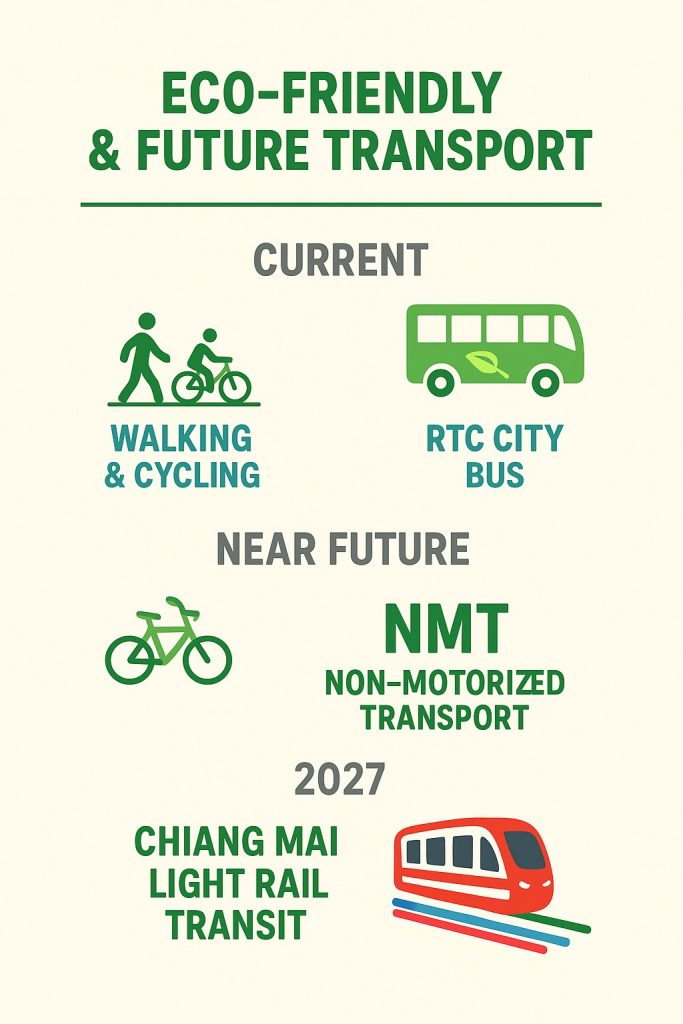
Useful Apps & Resources for Your Chiang Mai Trip
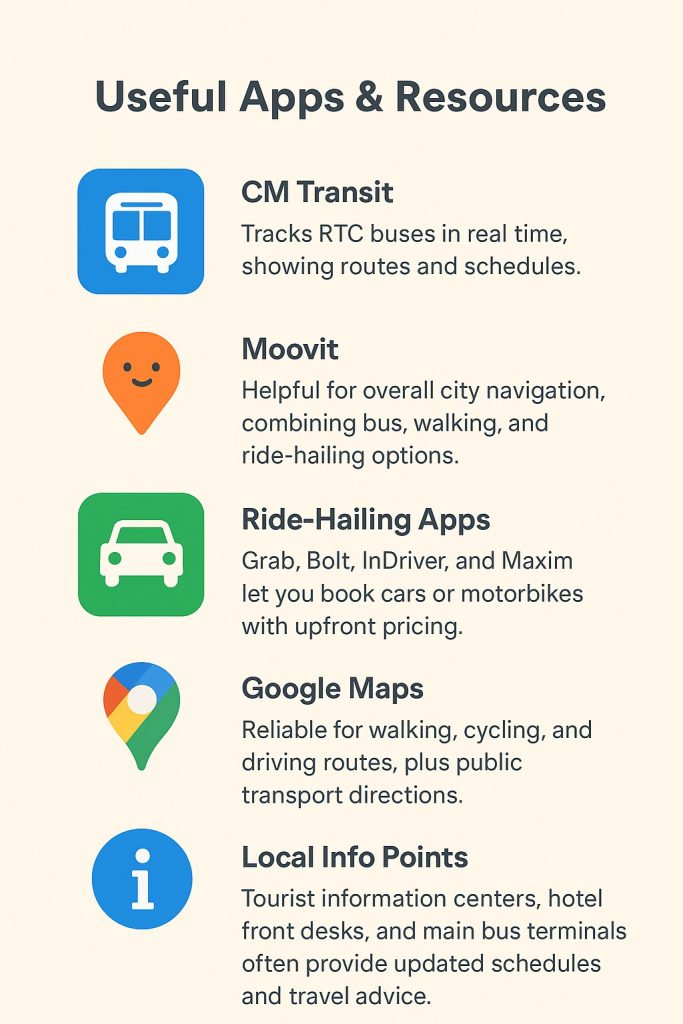
Navigating Chiang Mai with Ease
Chiang Mai’s transport scene is a unique blend of the old and the new. You’ll find yourself riding in bright red songthaews one moment and booking a Grab the next, it’s all part of the experience! The best way to get around really depends on what kind of traveler you are: strolling or cycling works perfectly in the Old City, while a quick Grab ride is a lifesaver after a late-night market run.
If you are in Chiang Mai, then hop on a songthaew at least once; it’s not just transport, it’s part of Chiang Mai’s culture. Pair that with the comfort of Grab when you want something quicker and more reliable.
And the future of Chiang Mai Transport looks even brighter. With plans for a light rail system and more eco-friendly travel options, Chiang Mai is steadily becoming easier, greener, and more fun to explore. So whether you’re here for the temples, the night bazaars, or the mountain views, getting around will be part of the adventure itself! Make your Chiang Mai trip easier and affordable with Thrillark.
FAQs
Q.1. What is the best way to get around Chiang Mai?
The best way to get around Chiang Mai depends on your budget and style. For cultural immersion, hop on a red songthaew (shared taxi). For convenience and comfort, use Grab or Bolt. Within the Old City, walking and cycling are great options.
Q.2. Is Grab available in Chiang Mai?
Yes! Grab works in Chiang Mai just like Uber. It’s the most reliable option for safe rides, airport transfers, and late-night trips. Other ride-hailing apps like Bolt, InDriver, and Maxim are also available.
Q.3. How much do tuk-tuks and songthaews cost in Chiang Mai?
- Songthaews: Start from ฿20–30 for short city rides.
- Tuk-tuks: Usually ฿60–100 depending on distance and bargaining.
- Grab cars: Around ฿100–120 for most city rides.
Q.4. Can you walk around Chiang Mai Old City?
Absolutely! The Old City is very walkable with temples, cafes, and markets all within easy distance. Cycling is also popular, though traffic can be a little tricky outside the walls.
Q.5. How do you get from Chiang Mai to Bangkok?
You can travel from Chiang Mai to Bangkok by:
- Overnight sleeper train (12–14 hrs, scenic and budget-friendly)
- Domestic flights (1 hr, fastest and easiest)
- Buses from Arcade Terminal (10–12 hrs, cheapest option)
Q.6. Is there a metro or light rail in Chiang Mai?
Not yet, but the Chiang Mai Light Rail Transit (LRT) is in development and expected around 2027. For now, transport is mainly buses, taxis, songthaews, and ride-hailing apps.
Q.7. How do I get from Chiang Mai Airport to the city?
Chiang Mai International Airport is just 15–20 minutes from the Old City. You can take a Grab (฿100–120), a songthaew (฿40–60), or a prepaid airport taxi (฿150).


